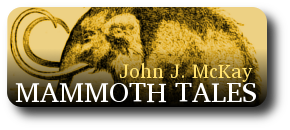Numerous reports clearly point right to the Smithsonian receiving giant remains and indicate their scientists were involved in the excavations but the skeletal material all seems to have gone missing. If all this evidence was "normal sized" then where are the remains to prove this? Obviously, removing the remains, creating a law to force repatriation of all of this material (NAGPRA) and concocting a fairy tale that somehow all this evidence was in error and you have the current state of affairs. A state where a wall of arrogance and dissimissiveness [sic] has been built to make it virtually impossible for professionals to objectively look at the evidence.
David Childress promoted the idea in his claims about the alleged Egyptian-Tibetan tomb in the Grand Canyon, and Ross Hamilton picked up the thread with the “Holocaust of Giants: The Great Smithsonian Cover-Up” article in 2001; he quotes Vine Deloria, who I suppose is probably right in relating the idea to “the ending of the Indiana Jones movie—a great warehouse where the real secrets of earth history are buried.” He, though, took the idea seriously because he was notorious for accepting pseudoscience as long as it supported his political views. I’d guess that Raiders of the Lost Ark had a good deal of influence on how alternative types—who liken themselves to Indiana Jones—perceive museums. Childress wrote an article in 1993 (World Explorer vol. 1, no. 3) called “Smithsoniangate” in which he explicitly cited Raiders of the Lost Ark as a touchstone for understanding the Smithsonian “cover-up.” He accused John Wesley Powell of starting the cover-up in 1881 to quash evidence of a lost white Mound Builder culture. So far as I know, this is the first reference I can find to the imaginary cover-up, though there may be earlier versions I do not know about.
The second sentence is worse, inverting the burden of proof. The author wants bones of normal size to prove they are not the bones of giants; yet, if these finds were hoaxes (as most were), there would be no bones whatsoever. The absence of normal sized bones is not proof of the reality of gigantic ones. So where are the bones? One of the most ridiculous tropes of the era was the case of the disintegrating bones. In 1800, for example, a landowner named Aaron Wright (later famous for contributing evidence challenging the authenticity of the Book of Mormon) claimed to have pulled the skull of a giant from a mound in New Salem, Ohio, so large it was twice the size of a normal human. He allegedly wore the skull as a mask, covering his whole face. Then, when others came to see it, suddenly it crumbled into dust. Just to top it all off, when Caleb Atwater showed up in 1820 to study the site, he was told the bones had been abnormally small and belonged to midgets! This was not an isolated event.
The next claim suggests that the 1990 Native American Graves Protection and Repatriation Act—which, incidentally, does not apply to private land or state-owned land, only federal lands—is a conspiracy to hide the bones of giants. Since all of the bones that are repatriated are documented, where exactly is this hiding the giant bones? Are all the Native Americans in on it, too, choosing to bury giants’ bones as Native American and willfully ignoring ten-foot-long femurs? I imagine a latter-day Procrustes chopping up the bones to fit normal-sized burial plots while rubbing hands together and cackling about pulling one over on the biblical literalists.








 RSS Feed
RSS Feed